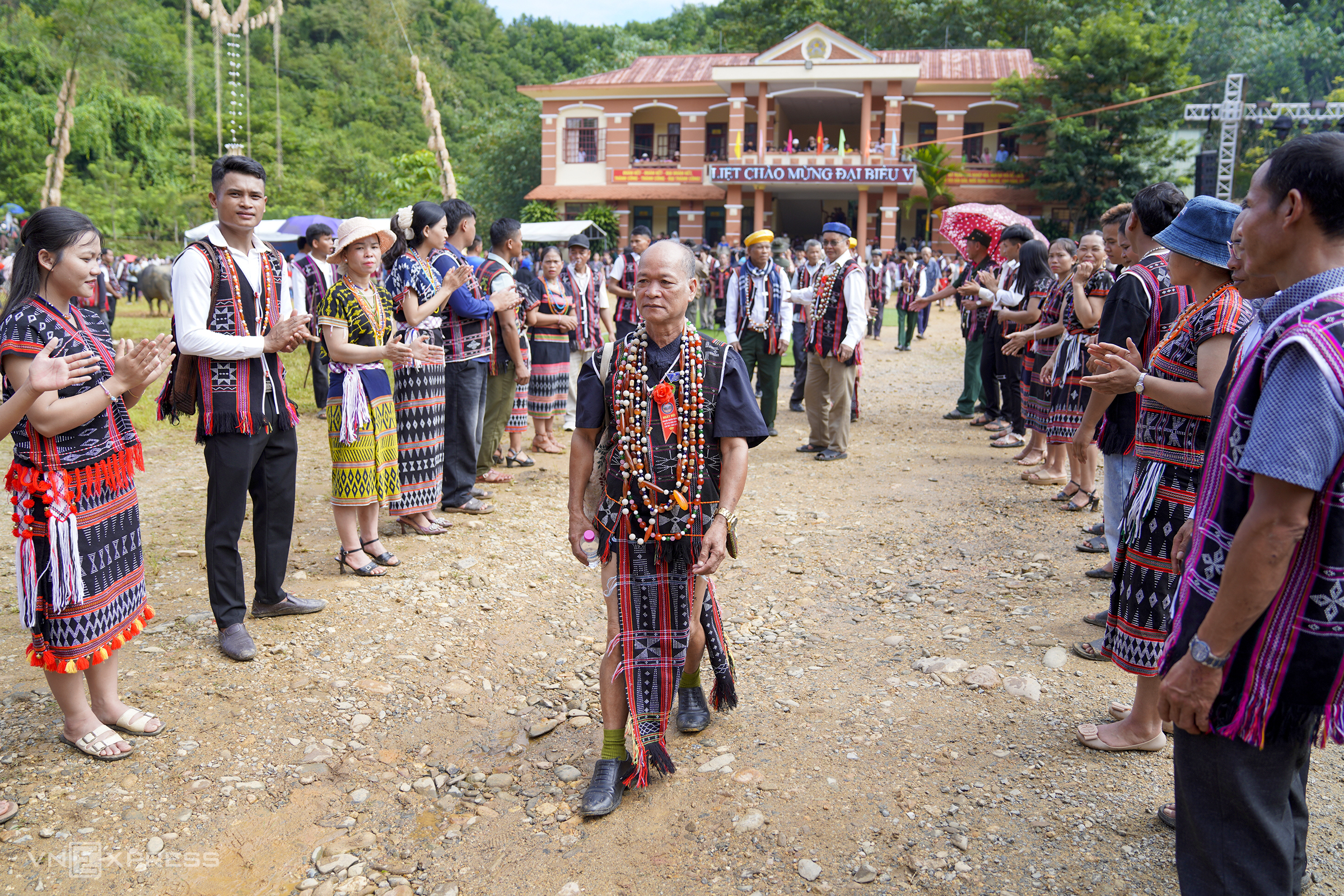 |
Gifts brought by representatives of A Ting and Song Kon to Jo Ngay included ta vat wine (made from doac tree sap), river fish, and a chicken. Approximately 30 influential members from the two former villages passed through the cultural center's gate to participate in this important ritual. |
On 1/7, Quang Nam merged with Da Nang, creating Vietnam's largest centrally-administered city, spanning 11,860 km2 with a population exceeding 3 million. Much of the former Quang Nam province is mountainous terrain.
Three villages, A Ting, Jo Ngay, and Song Kon (formerly in Dong Giang district, Quang Nam), were merged into the new Song Kon village. During the traditional Co Tu Cultural Festival in late September, village elders decided to perform a brotherhood ceremony to strengthen unity across the Truong Son mountain range.
Influential community members from the three villages were welcomed before the ceremony. The new Song Kon village headquarters is located in the former Jo Ngay village, making Jo Ngay's village elder the host, while the elders from A Ting and Song Kon were the guests.
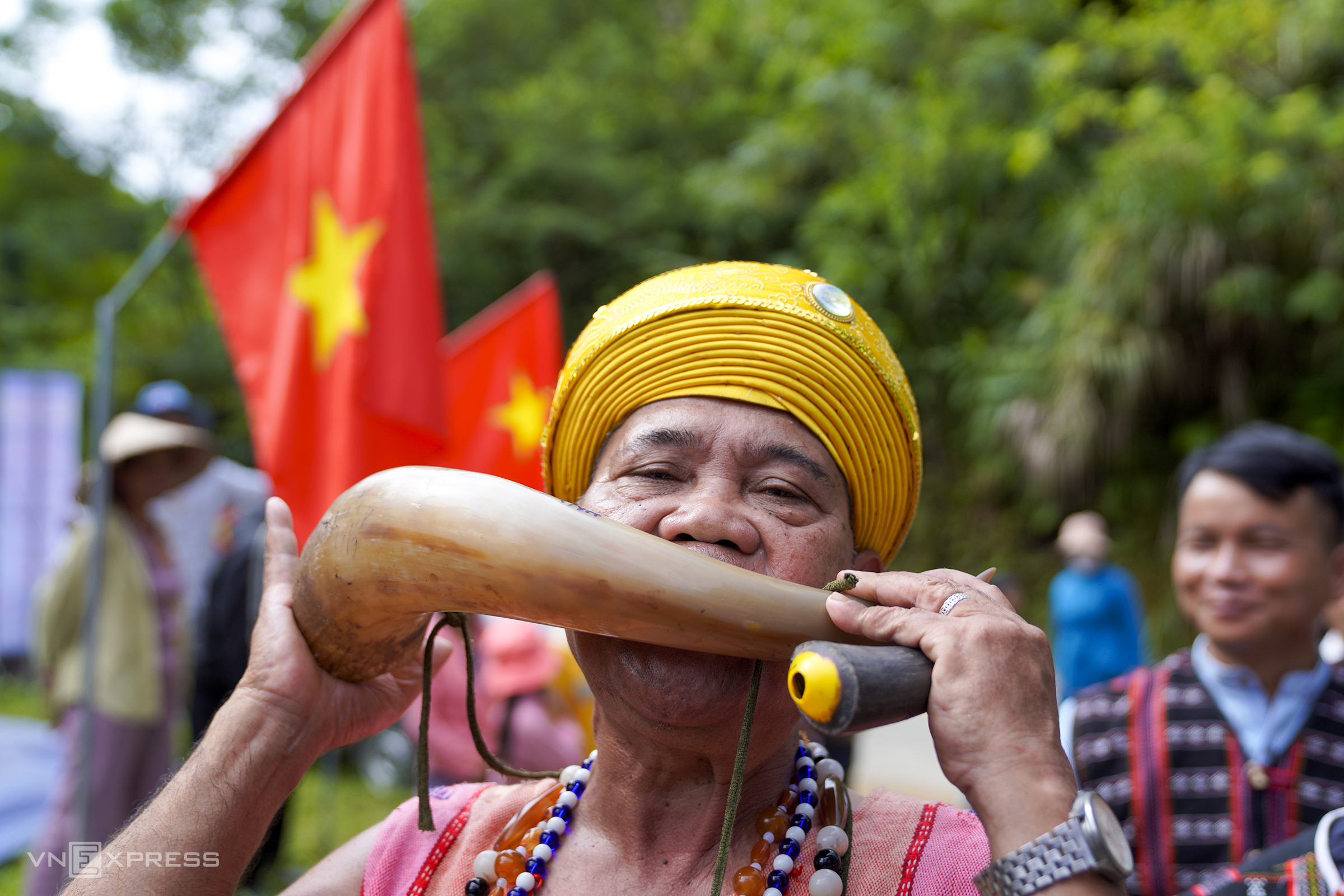 |
Following greetings, the elders gathered around a prepared table, singing ly (a popular form of Co Tu folk song) to express respect, celebrate their brotherhood, and pledge long-term harmony and mutual support. |
As the procession lined up to enter the cultural center, 69-year-old village elder Briu Danh, from Bho Hoong hamlet in the former Song Kon village, played a traditional horn, summoning the villagers to gather for the important ceremony.
The horn holds sacred significance in Co Tu ceremonies, played to commence proceedings and invoke the presence of spirits and ancestors.
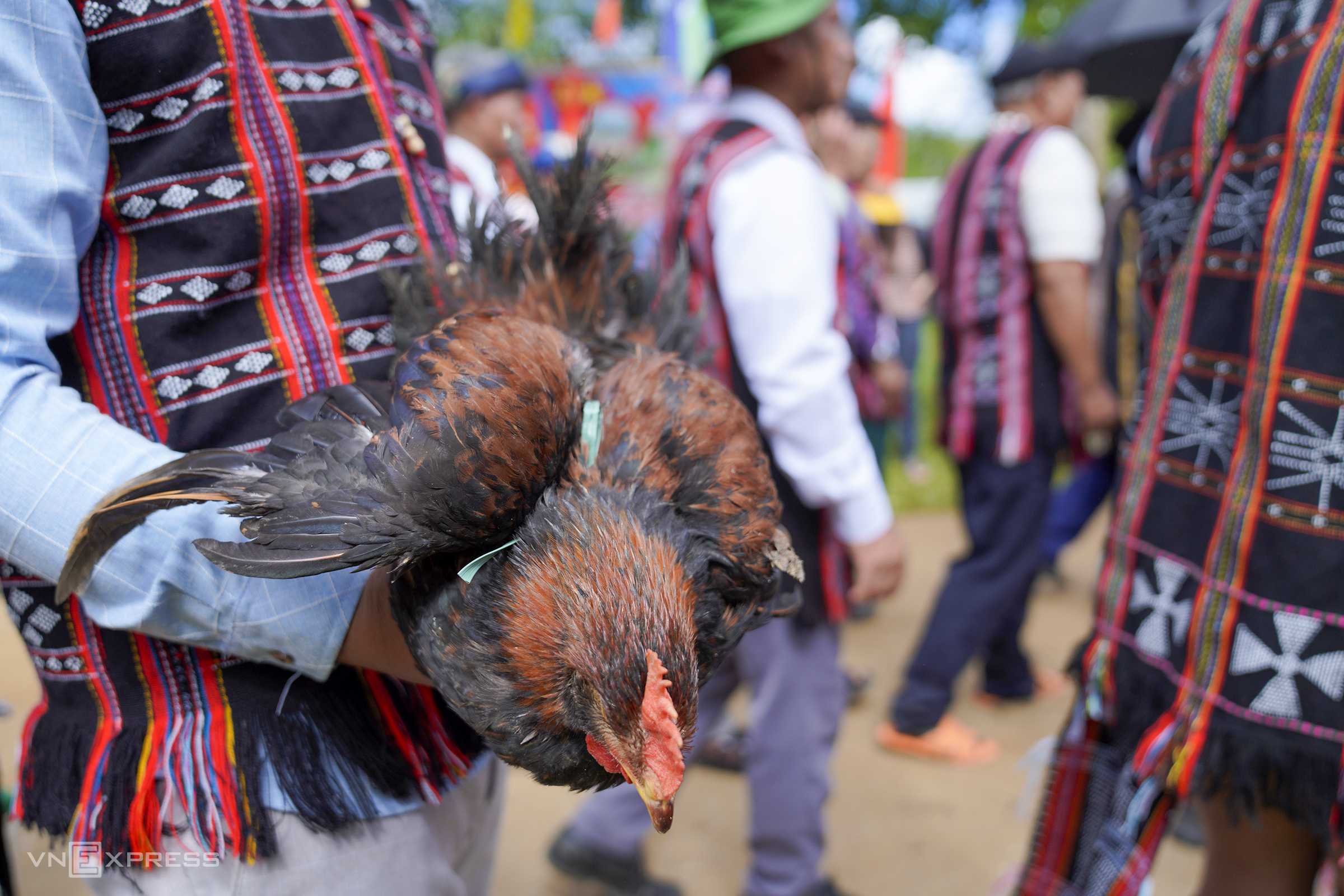 |
The village elders then raised their glasses and shared grilled pork, demonstrating respect and hospitality, and solidifying their pledge of brotherhood between the villages. |
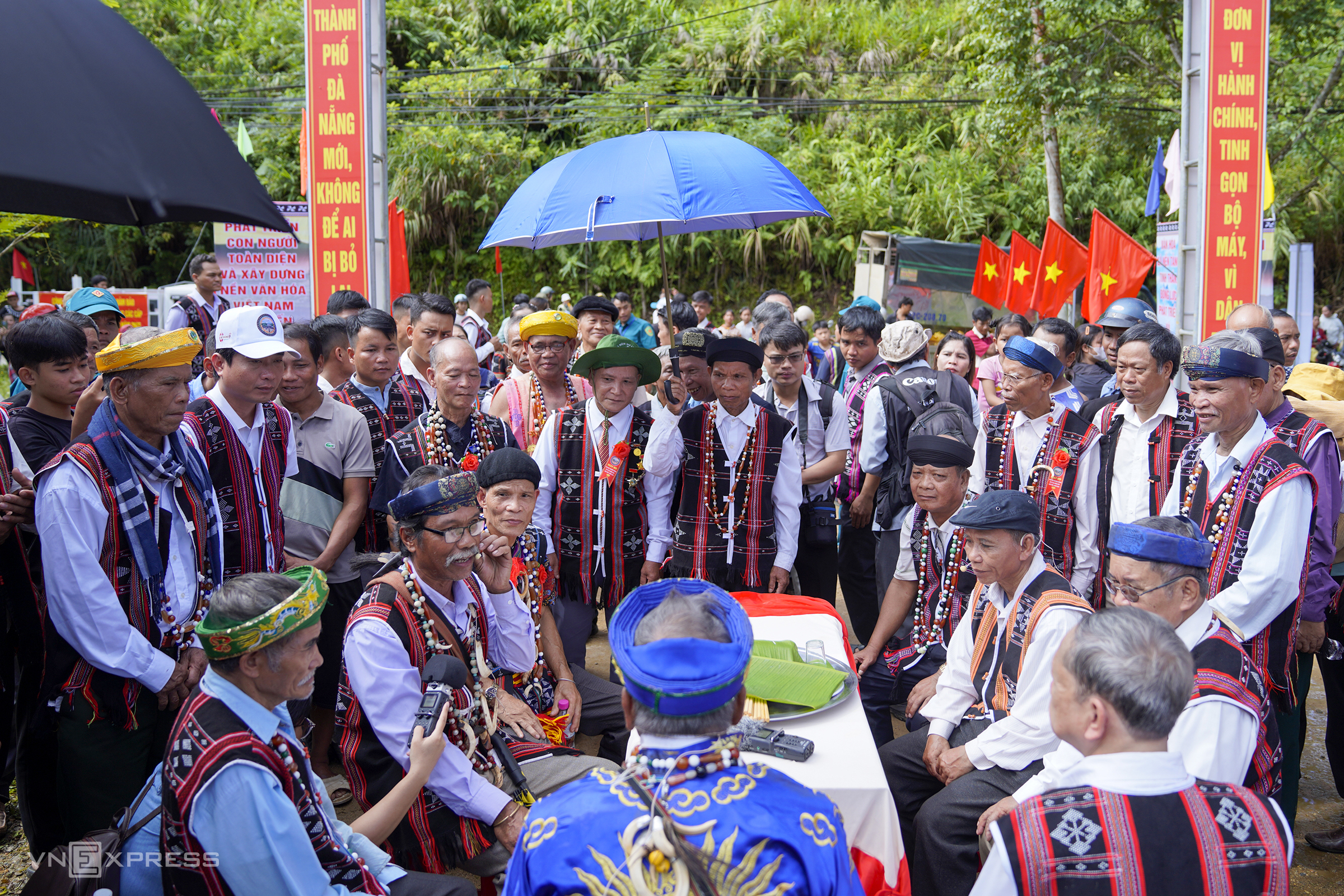 |
After the toast, 84-year-old A Lang Chuc (wearing a traditional long coat and turban), the elder of the former Jo Ngay village from Ra Lang hamlet, shook hands with the elders representing A Ting and Song Kon, further affirming their unity. |
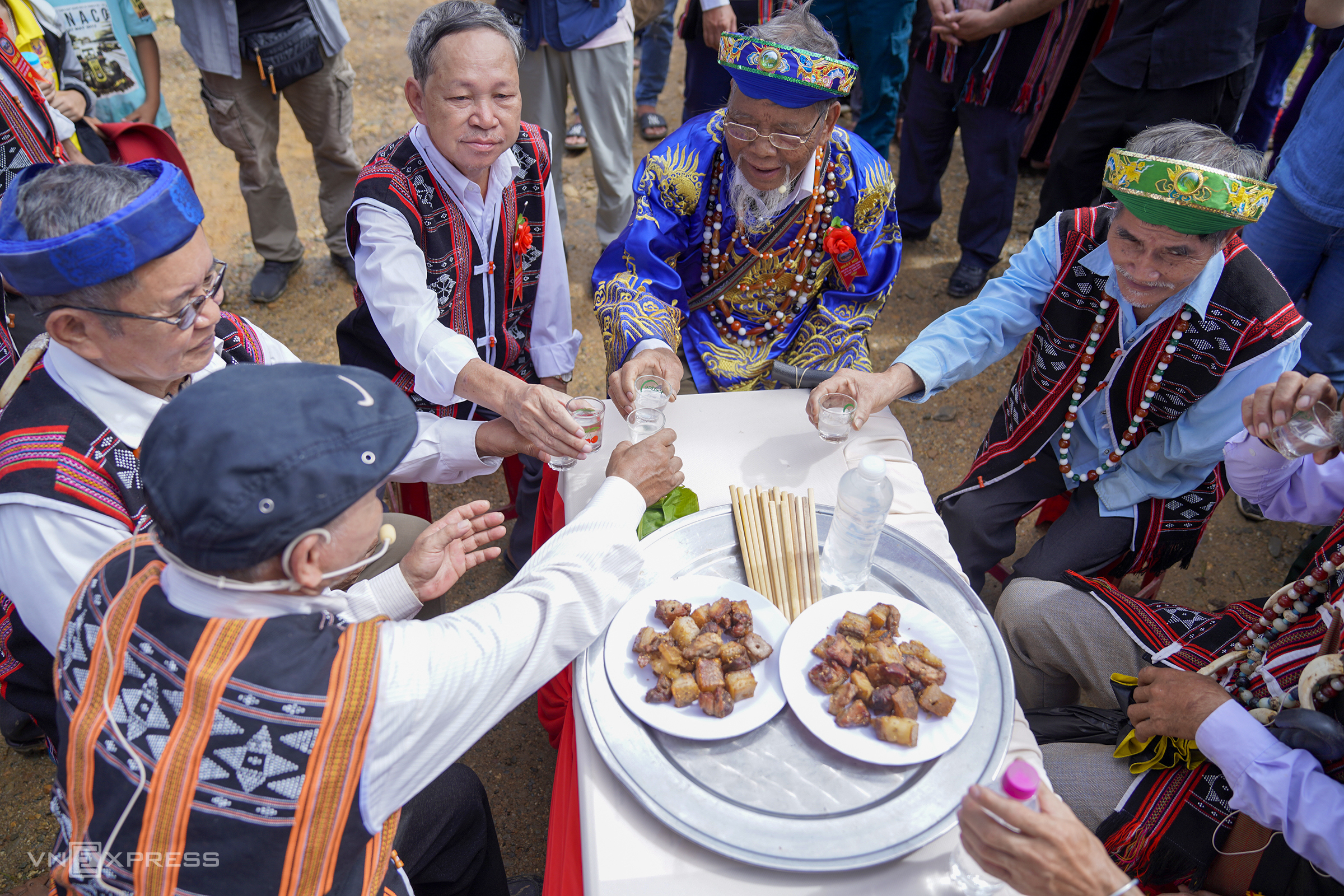 |
Other respected community members entered the cultural center, where they were offered food and drink by their hosts, exchanging warm handshakes. |
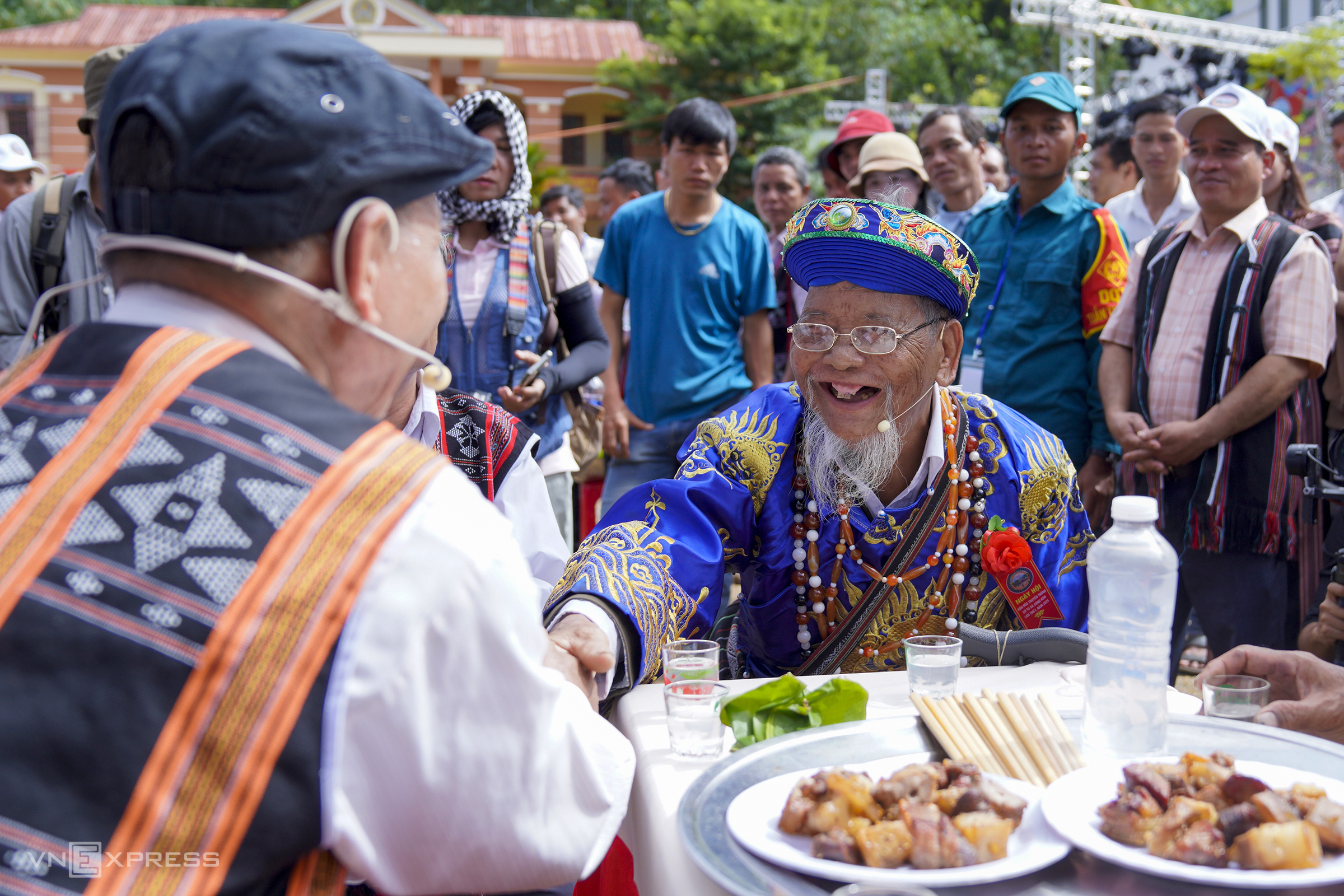 |
After the brotherhood ceremony, people from all three villages performed the tang tung da da dance, with thousands gathered at the cultural center to cheer and learn about Co Tu culture. |
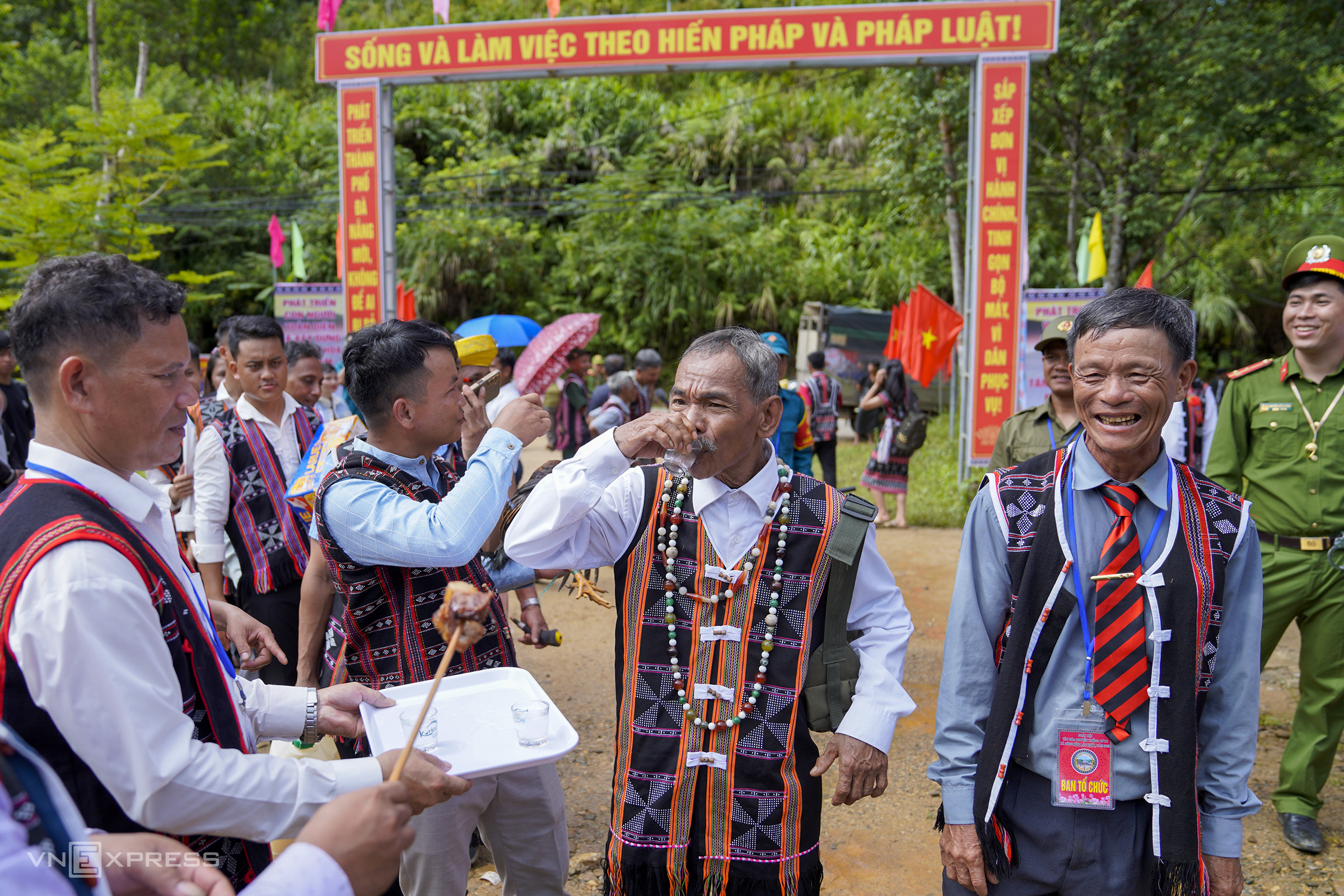 |
The villagers had practiced their cultural performances for months in preparation for this community event. |
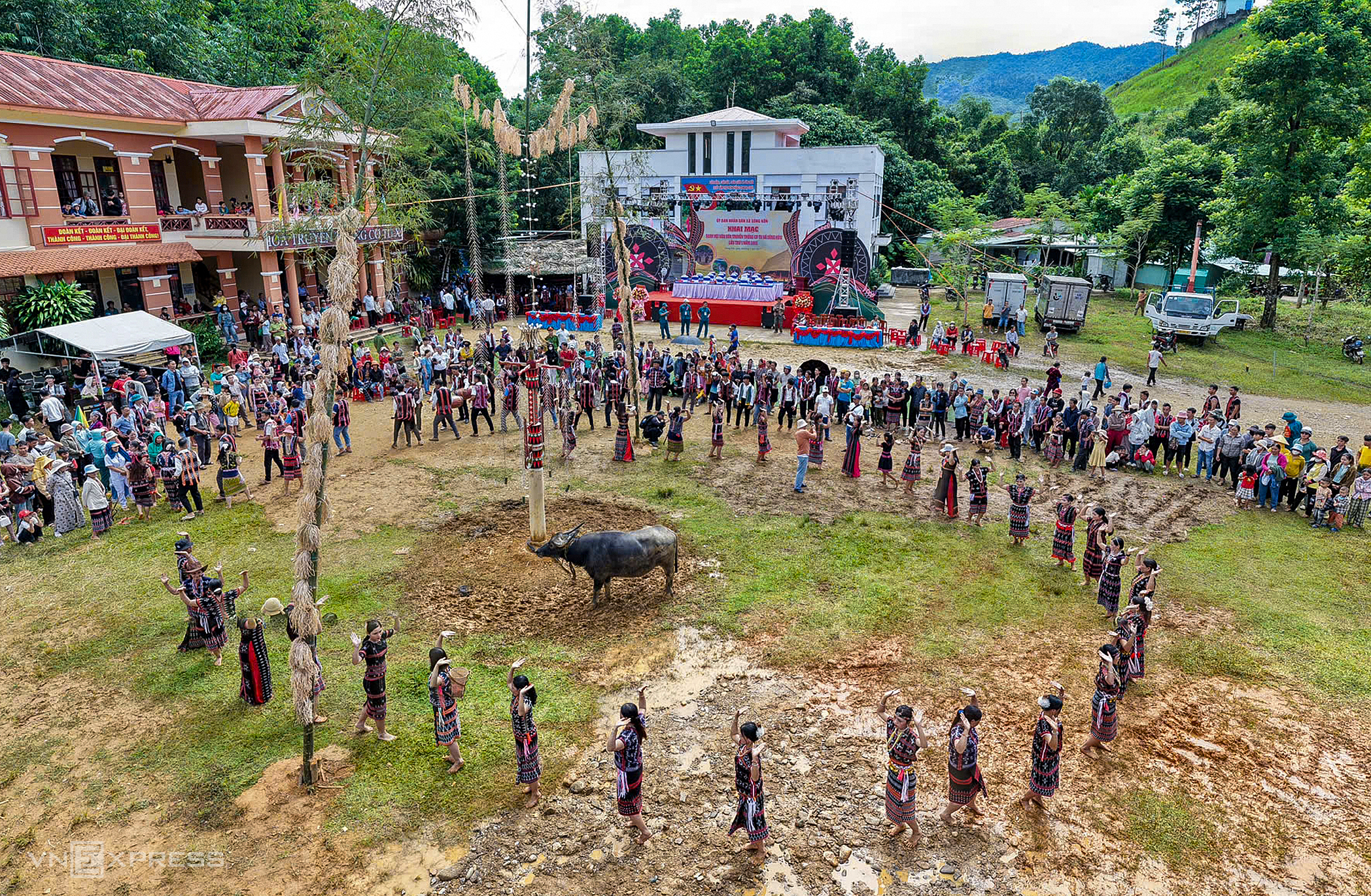 |
Accompanied by gongs and drums, the group circled the neu pole—a symbol connecting heaven, earth, and humanity—and a water buffalo, an offering to the spirits. Once the buffalo was tied to the neu pole, the villagers danced, sang ly, and drank wine.
The Co Tu people then formed a circle around the buffalo and performed the traditional tang tung da da dance. This dance expresses gratitude to the spirits, praying for bountiful harvests, village unity, and prosperity.
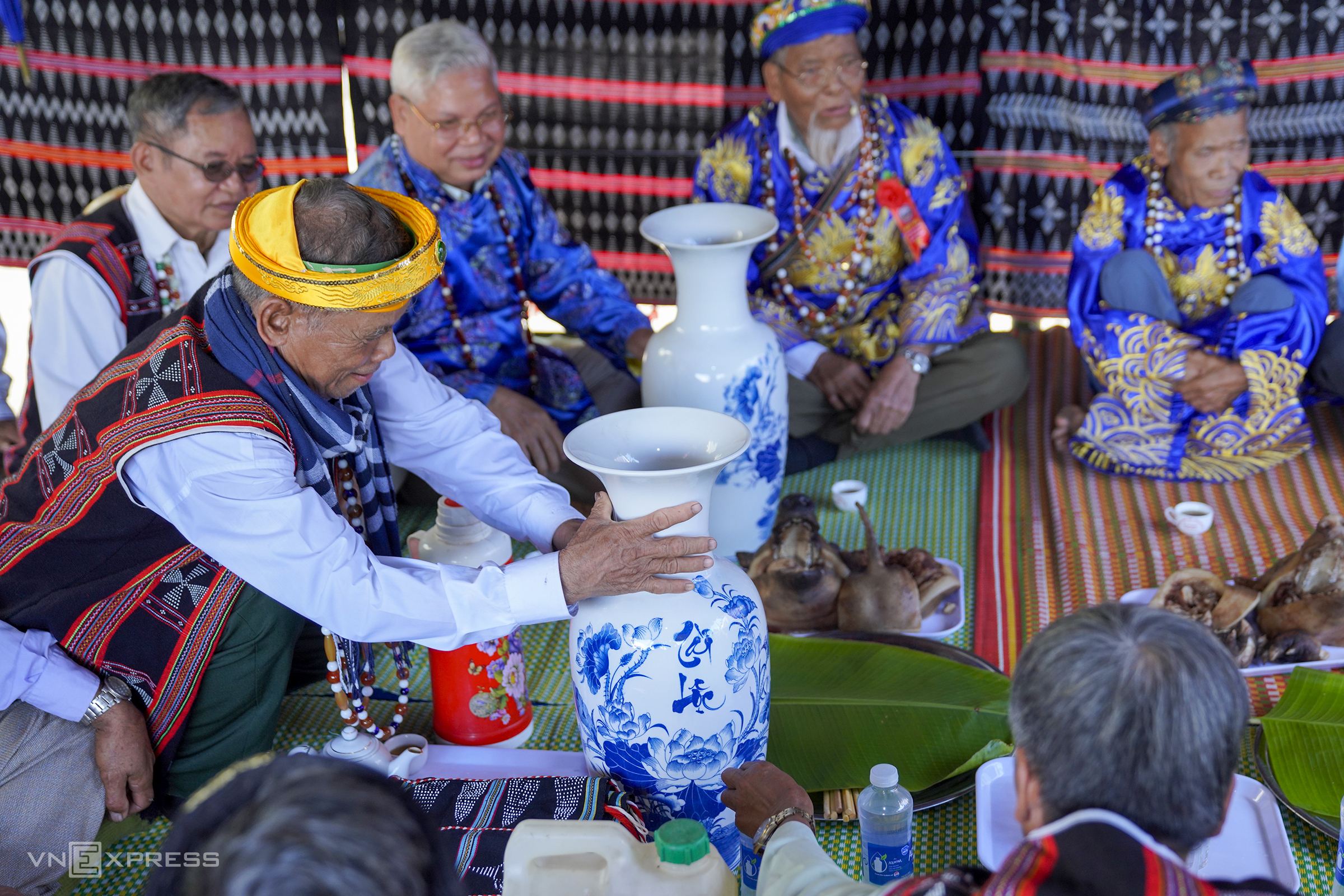 |
Meanwhile, the elders and influential figures gathered in a hut roofed with forest leaves and decorated with locally handwoven brocade to sing ly and discuss ways to preserve their customs and strengthen community bonds.
The Jo Ngay village elder presented gifts of porcelain vases and locally woven brocade to the elders of A Ting and Song Kon.
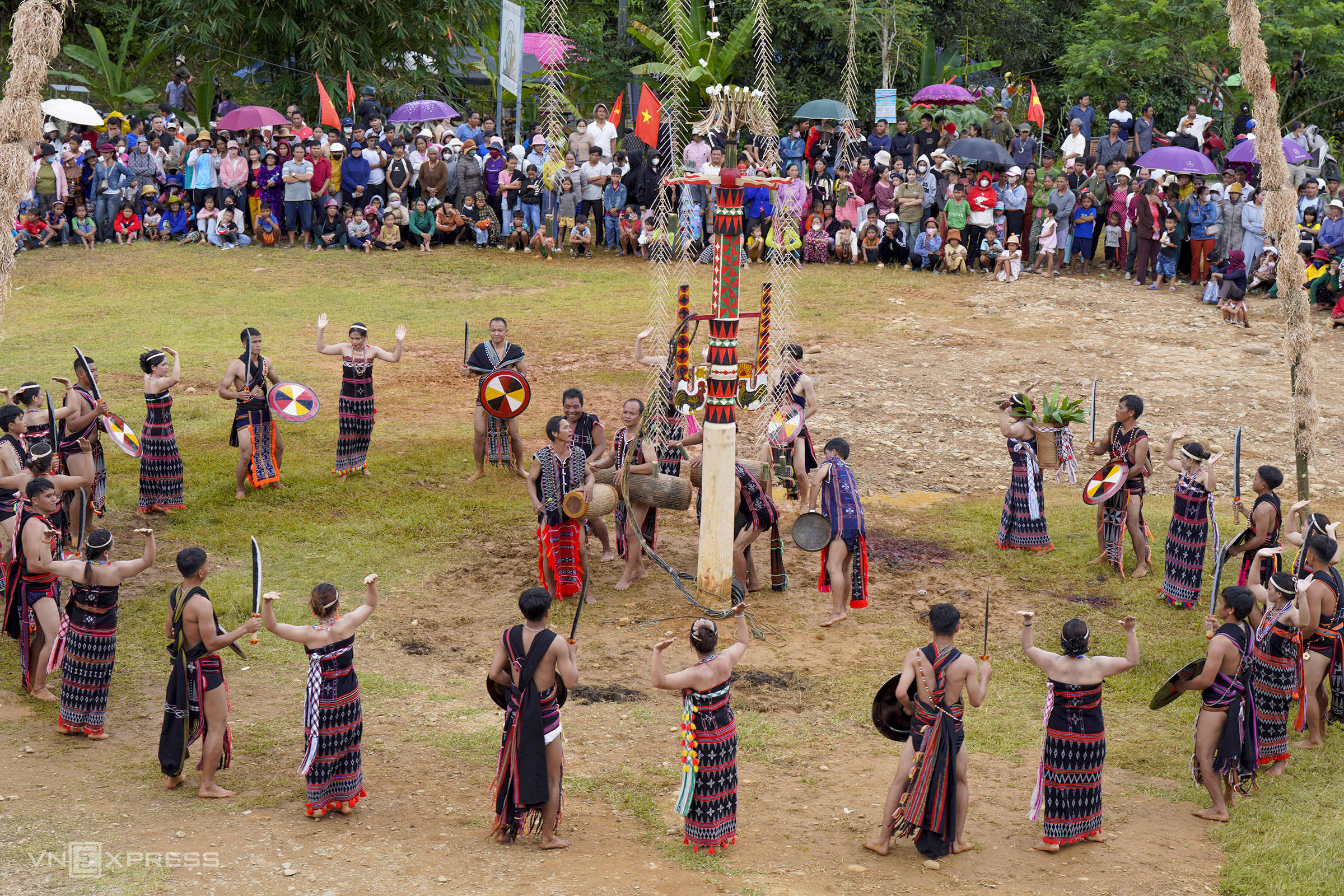 |
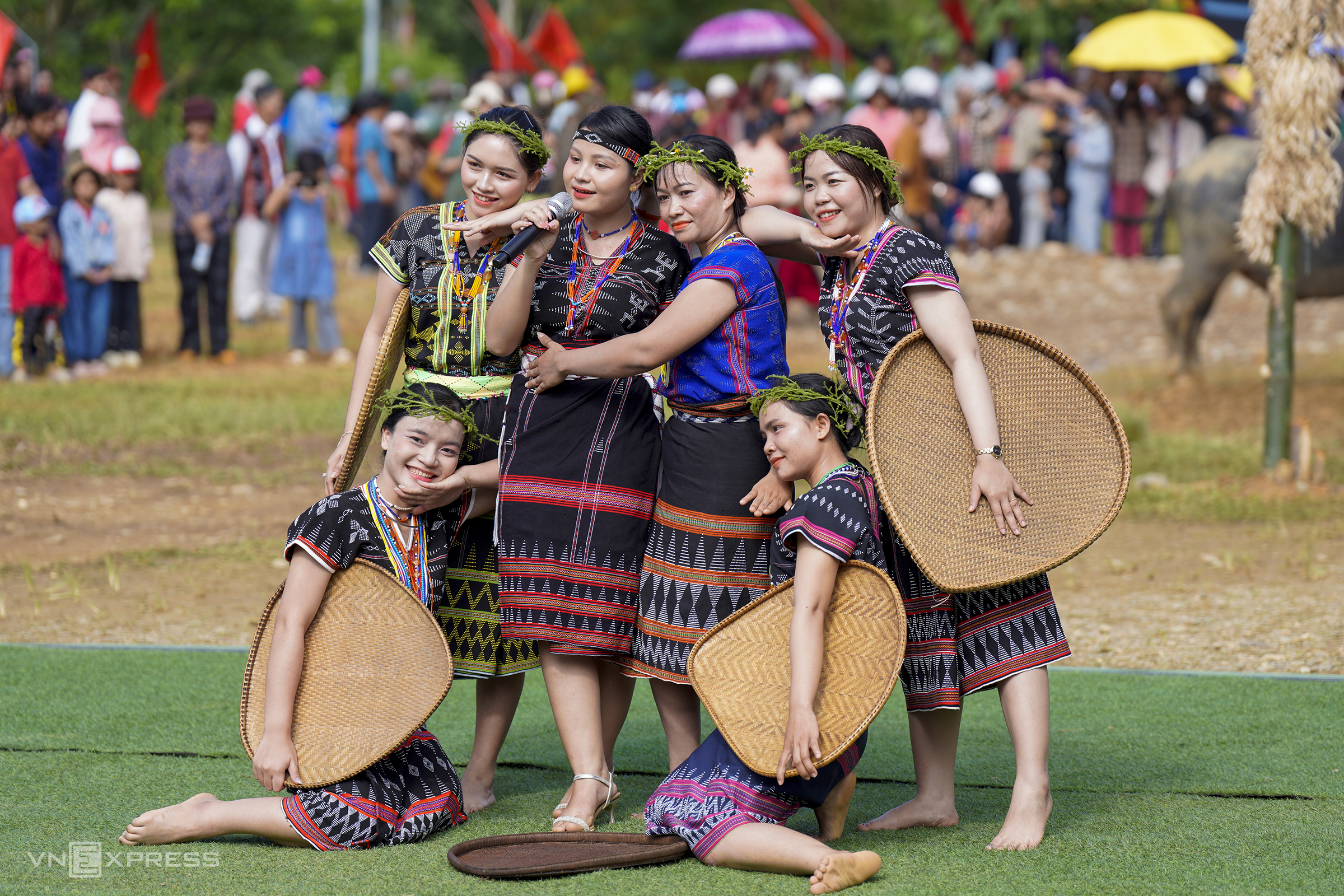 |
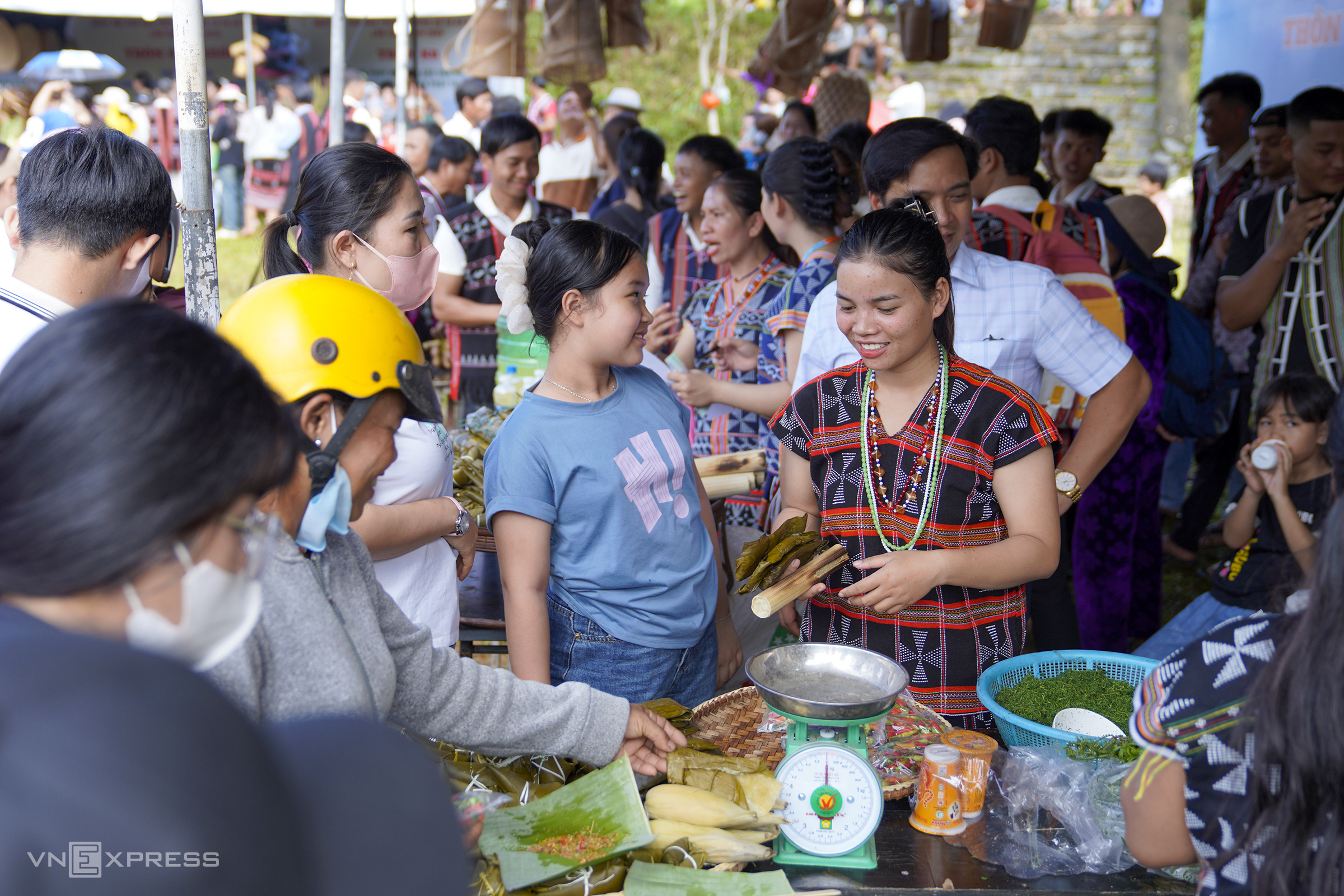 |
The 1st Song Kon Co Tu Cultural Festival also featured stalls selling local products, cuisine, handicrafts, and more.
Do Huu Tung, chairman of the Song Kon Village People's Committee (UBND), explained that traditionally, brotherhood ceremonies were held between villages, but this was the first time such a ceremony took place between what were formerly separate villages. “After the merger, the three villages became one Song Kon village. This brotherhood ceremony is significant in strengthening relationships and creating a unified voice," he stated.
In Co Tu culture, brotherhood ceremonies between villages are a way to resolve past conflicts. Although there were no past disputes between A Ting, Song Kon, and Jo Ngay, geographical distance limited interaction and connection. “This ceremony not only preserves and promotes Co Tu culture but also contributes to socio-economic development and a better life for all,” Tung emphasized.
Nguyen Dong












